Advocates for biofortified crops in Nigeria and Tanzania
The Building Nutritious Food Baskets (BNFB) project has promoted biofortified varieties with the help of local advocates, who have been trained with a toolkit of educational materials. In Nigeria and Tanzania, the advocates have become champions of biofortified crops such as vitamin A-rich varieties of cassava, sweetpotato, and maize and beans with high zinc and iron content. The advocates have trained over 11,000 community volunteers and other change agents. A million farmers are now growing biofortified crops in Tanzania and Nigeria.
Adopting balanced diets that include foods rich in vitamins and minerals can improve human nutrition, but healthy eating habits and new nutritious crops are not always well-known and widely adopted. That is where advocacy and training come in. From 2015 to 2018, the BNFB project has promoted biofortified varieties through a common approach to advocacy across multiple crops. The project is led by CIP and implemented with four CGIAR centers and HarvestPlus as well as community, national, regional and international stakeholders. The BNFB project has trained 101 men, women and youth as advocates for healthy varieties such as OFSP, yellow cassava and other staples. The advocates have learned technical and advocacy skills which they use to promote policy change and to raise new investment, as well as to train community volunteers and other change agents. The project developed a toolkit on biofortification with flyers, fact sheets, banners, success stories and an investment guide to support nutrition education and to create awareness. The advocates trained by BNFB have helped to promote a better understanding of the benefits of biofortified crops.

Parliamentarian Advocacy May 2018. J. Maru/CIP
Four learning toolkits have been written to give the advocates more information on sweetpotatoes rich in vitamin A, beans that are high in iron and zinc, and pro-vitamin A maize. These toolkits were used to train 11,433 change agents (including 5,976 women), who are now promoting varieties that are rich in vitamins and minerals.
As a result of advocacy, biofortification (building vitamins and minerals into crop varieties) has been written into 11 government policies, plans and strategies in Nigeria and Tanzania. As proof of commitment, donors, NGOs, the private sector and governments have invested over USD6.5 million in biofortification programs. Another USD13 million is in the pipeline.
The Tanzania Food and Nutrition Center (TFNC) is the government agency that is responsible for technical and policy issues on nutrition. The CEO of the TFNC, Vincent Assey, says, “BNFB has developed our capacity to make people understand the difference between biofortified crops and genetically modified crops.” Assey adds that “We have now seen that biofortification is a sure way of tackling the malnutrition problems in the country.”
Vitamin A deficiency affects at least 30% of the population of Nigeria, and is especially severe for small children and women of reproductive age. Most people who suffer from the lack of vitamin A, iron or zinc show no physical symptoms of malnourishment, which is why micronutrient deficiency is called the “hidden hunger.” In Nigeria, Gift Buduzhi Oguzor is a community nutritionist who leads an effort to promote OFSP in Rivers State. After taking a 10-day training-of-trainers course supported by BNFB, Gift became a champion for OFSP. By March 2018 he had trained over 275 change agents with little support from BNFB.

Nigeria National Advocates for Biofortification. F. Kassim/Partnership for Nutrition in Tanzania
International research centers can develop new crop varieties, but only governments can release them. The BNFB project has fast-tracked the release of seven biofortified varieties, including Solo Gold, a new OFSP in Nigeria.
Farmers are also picking up on the new varieties. Nearly a million farm households are growing biofortified crops in Tanzania and Nigeria. Nine processors in Tanzania and Nigeria continue to sell products such as pro-vitamin A maize flour, OFSP flour, bean flour, bakery products and baby food.
Hilda Munyua, the BNFP project manager says, “The project has played a catalytic role in strengthening the capacity of advocates and champions through a take-lead, empower and take-off approach, and they continue to engage policy makers and train new agents of change.”
SHARE THIS
